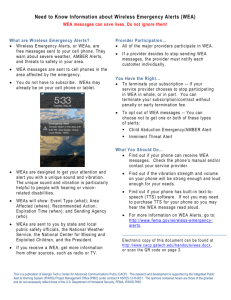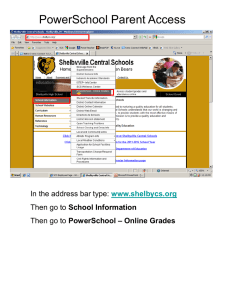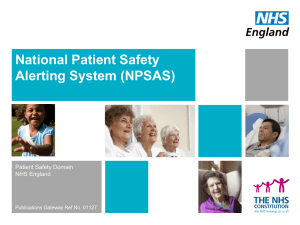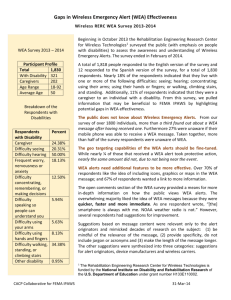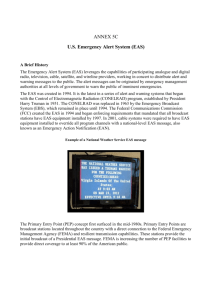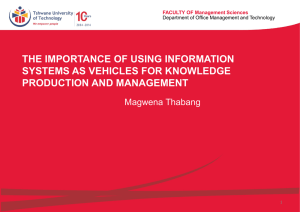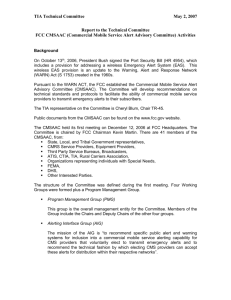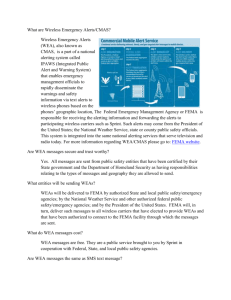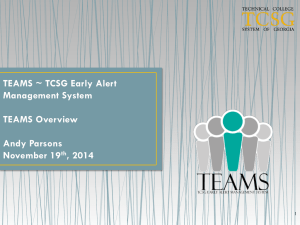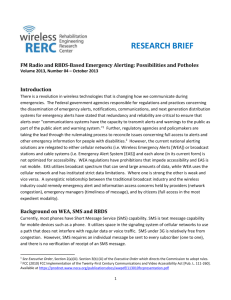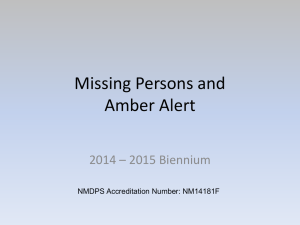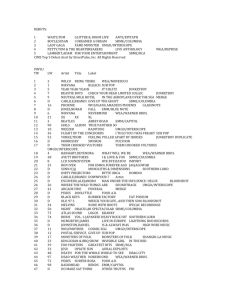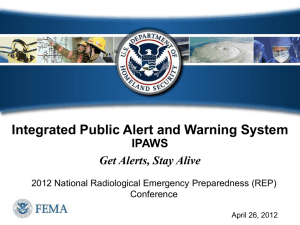8_-_IPAWS_WSEMA_2013
advertisement
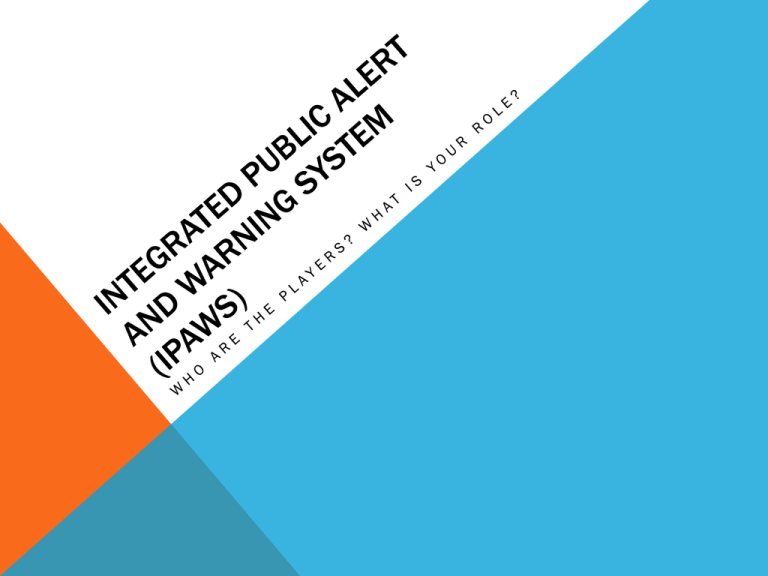
INTEGRATED PUBLIC ALERT AND WARNING SYSTEM EVOLUTION OF EMERGENCY ALERTING 1951 - 1963 CONELRAD Originally called the “Key Station System,” the CONtrol of ELectromagnetic RADiation (CONELRAD) was established in August 1951. Participating stations tuned to 640 & 1240 kHz AM and initiated a special sequence and procedure designed to warn citizens. 1963 - 1997 EBS EBS was initiated to address the nation through audible alerts. It did not allow for targeted messaging. System upgraded in 1976 to provide for better and more accurate handling of alert receptions. Originally designed to provide the President with an expeditious method of communicating with the American Public, it was expanded for use during peacetime at state and local levels. 1997 - 2006 EAS EAS jointly coordinated by the FCC, FEMA and NWS. Designed for President to speak to American people within 10 minutes. EAS messages composed of 4 parts: • Digitally encoded header • Attention Signal • Audio Announcement • Digitally encoded end-ofmessage marker 2006 IPAWS IPAWS modernizes and integrates the nation’s alert and warning infrastructure. Integrates new and existing public alert and warning systems and technologies Provides authorities a broader range of message options and multiple communications pathways Increases capability to alert and warn communities of all hazards impacting public safety. WASHINGTON STATE EXAMPLE – MYSTATE USA WIRELESS EMERGENCY ALERTS (WEA) WEA: WIRELESS EMERGENCY ALERTS • Wireless Emergency Alerts (WEA) is the industry branding name of the new Commercial Mobile Alert System (CMAS) • CMAS required by Federal Warning, Alert, and Response Network (“WARN”) Act, passed in 2006 • WEA alert types: Presidential, imminent threat to life and property, AMBER alerts • WEAs are free messages / warnings – alerts sent directly to your cell phone. • WEAs are only 90 characters in length. • WEAs will be sent by Federal, State, Local Government, NWS, National Center for Missing & Exploited Children (*AMBER Alerts) • WEAs are geographically targeted. If you are in an area under an alert AND you have a WEA capable device, you should receive the alert regardless of your cell phones area code. CURRENT CHALLENGES/WHERE WE ARE AT State Emergency Communications Committee will address WEA in addition to EAS Challenges: • Plans, policies, procedures for the use of WEA must be developed at the federal, state, and local levels and integrated vertically. • Technical issues with the IPAWS OPEN aggregator, the wireless carriers and the phone manufacturers need to be resolved. • Training and public information needs to be developed and provided for alerting authorities, wireless device vendors, and the general public. • These challenges must be overcome before people choose to opt out because WEA is perceived to be more of nuisance than a help. PANEL MEMBERS • Darrell Ruby, Region 9 Coordinator/Spokane DEM, facilitator • Clay Freinwald, State Emergency Communications Committee Chair, state governance body • Carri Gordon, AMBER Committee, state governance body • Ted Buehner, NOAA, national alerting authority • Roy Benavente, Emergency Management Division, state alerting authority • Amy Gillespie, Pierce County, local alerting authority • TBD, MyStateUSA, alert origination service provider • Brian Daly, AT&T, wireless carrier
